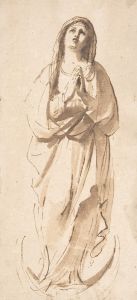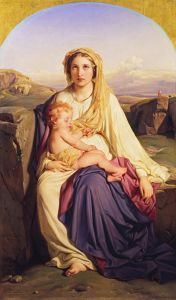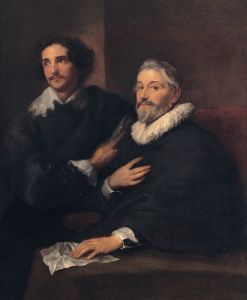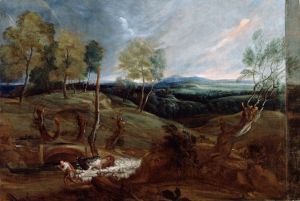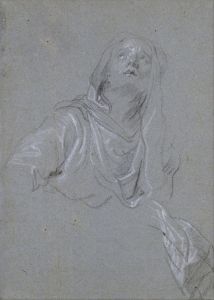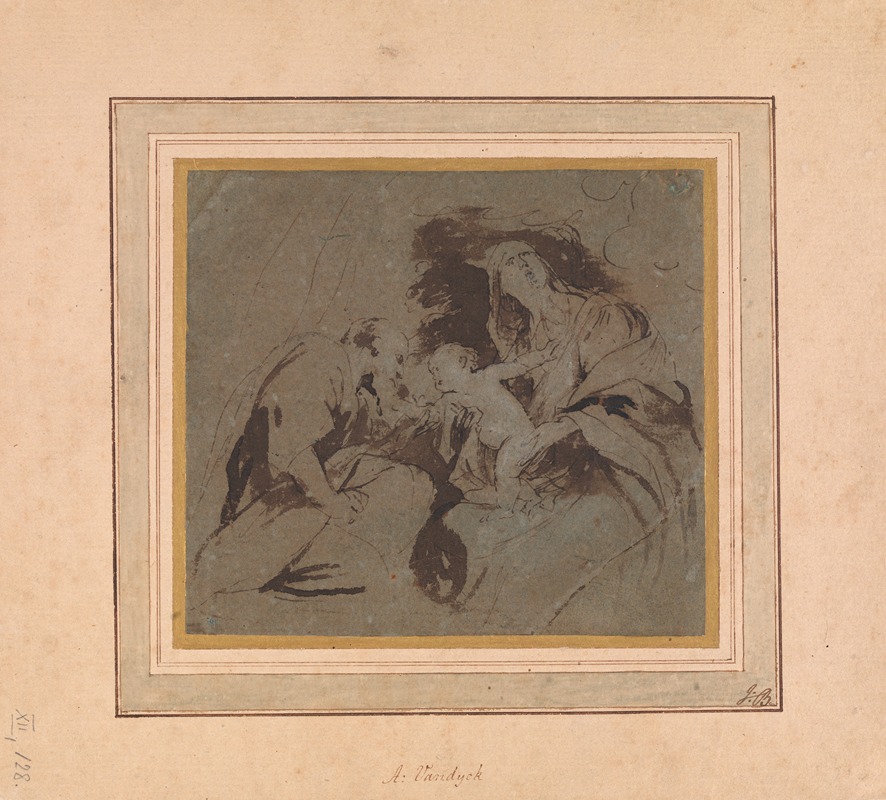
Virgin Mary with child and a saint or donor
A hand-painted replica of Anthony van Dyck’s masterpiece Virgin Mary with child and a saint or donor, meticulously crafted by professional artists to capture the true essence of the original. Each piece is created with museum-quality canvas and rare mineral pigments, carefully painted by experienced artists with delicate brushstrokes and rich, layered colors to perfectly recreate the texture of the original artwork. Unlike machine-printed reproductions, this hand-painted version brings the painting to life, infused with the artist’s emotions and skill in every stroke. Whether for personal collection or home decoration, it instantly elevates the artistic atmosphere of any space.
Anthony van Dyck, a prominent Flemish Baroque artist, is renowned for his portraits and religious works. One of his lesser-known paintings, "Virgin Mary with Child and a Saint or Donor," exemplifies his skill in religious iconography and his ability to convey deep emotion and spirituality through his art. This painting, like many of Van Dyck's works, reflects the influence of his mentor, Peter Paul Rubens, as well as his own unique style that he developed over his career.
The painting depicts the Virgin Mary holding the Christ Child, a common theme in Christian art that symbolizes purity, maternal love, and divine grace. The inclusion of a saint or donor in the composition is a typical feature of religious paintings from this period, serving both devotional and commemorative purposes. The identity of the saint or donor in this particular painting is not definitively known, as there is limited documentation regarding the specifics of the work. However, the presence of such a figure often indicates the painting's function as an object of private devotion or as a commissioned piece by a patron seeking spiritual intercession or memorialization.
Van Dyck's treatment of the figures in "Virgin Mary with Child and a Saint or Donor" showcases his mastery of color, light, and composition. The Virgin Mary is often depicted with a serene and contemplative expression, embodying the ideal of divine motherhood. The Christ Child, typically portrayed with a sense of innocence and playfulness, adds a dynamic element to the composition. The saint or donor, if present, would be depicted in a manner that reflects their spiritual significance or personal identity, often characterized by specific attributes or symbols associated with their life or patronage.
The painting's style is indicative of Van Dyck's mature period, where he combined the grandeur and dynamism of the Baroque with a refined elegance and sensitivity. His use of chiaroscuro, the contrast between light and dark, enhances the three-dimensionality of the figures and creates a dramatic yet intimate atmosphere. This technique, along with his delicate brushwork and attention to detail, contributes to the overall emotional impact of the painting.
While "Virgin Mary with Child and a Saint or Donor" may not be as widely recognized as some of Van Dyck's other works, it remains an important example of his contribution to religious art. It reflects the broader trends of the Baroque period, where artists sought to evoke emotional responses and convey spiritual themes through their work. Van Dyck's ability to capture the human and divine aspects of his subjects continues to be celebrated, and this painting is a testament to his enduring legacy in the history of art.







